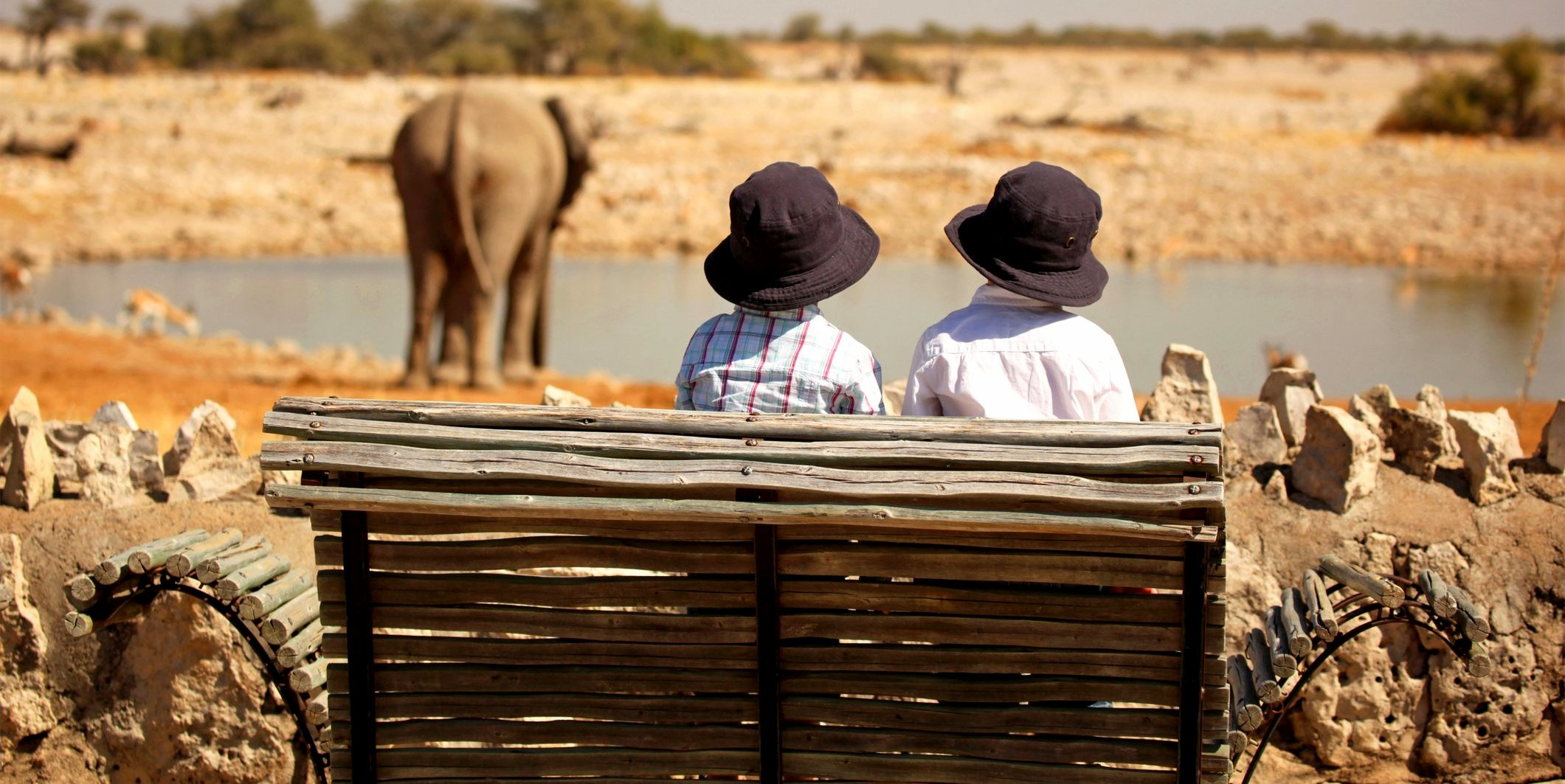Serengeti Safari Tours
Serengeti Safari Tours are arguably one of the most captivating wildlife experiences in the world. The Serengeti National Park, located in northern Tanzania, spans over 14,750 square kilometers and is a UNESCO World Heritage Site renowned for its vast, open grasslands that allow for excellent wildlife viewing.

What to Expect on a Serengeti Safari Tour
-
Wildlife: The Serengeti is famous for its abundant wildlife. It is one of the best places to observe the Big Five: lions, leopards, elephants, buffalo, and rhinoceros. Besides these, the park is home to cheetahs, hyenas, giraffes, and a multitude of other species.
-
The Great Migration: A highlight is the annual migration of over 1.5 million wildebeest along with hundreds of thousands of zebras and gazelle. This spectacle is considered one of the greatest wildlife shows on earth, as these animals move in an endless cycle across the plains, in search of fresh grazing and water.
-
Scenic Landscapes: The park offers iconic savannah landscapes that are often dotted with acacia trees, creating quintessentially African vistas. Sunset and sunrise are particularly breathtaking.
-
Birdlife: With over 500 species of birds, the Serengeti is a haven for bird watchers. From the outrageously colored lilac-breasted roller to large birds of prey, birding here can be exceptional.
Types of Safaris
-
Game Drives: Conducted in the early morning or late afternoon when the animals are most active. Night drives are also an option at some camps, offering a chance to see nocturnal creatures.
-
Balloon Safaris: Offering a bird’s-eye view of the sprawling landscape and wildlife, balloon safaris provide a unique perspective and stunning photo opportunities.
-
Walking Safaris: Accompanied by a guide, walking safaris offer a more intimate encounter with the park’s flora and fauna, allowing for detailed exploration not possible from a vehicle.
Serengeti Safari Tours promise an unforgettable adventure with some of the most spectacular wildlife viewing on the planet. Whether you're a seasoned safari-goer or a first-timer, the Serengeti’s timeless beauty and the rhythm of life on the plains are bound to leave a lasting impression.
Climbing Mount Kilimanjaro
Climbing Mount Kilimanjaro is a grand adventure that attracts thousands of trekkers from around the world each year. As Africa's highest peak, standing majestically at 5,895 meters (19,341 feet) above sea level, Mount Kilimanjaro in Tanzania is not only the tallest mountain on the continent but also the highest free-standing mountain in the world. The climb, which doesn’t require technical skills, offers a unique opportunity to traverse through wildly different climates and terrains, from lush rainforests to arctic conditions at the summit.
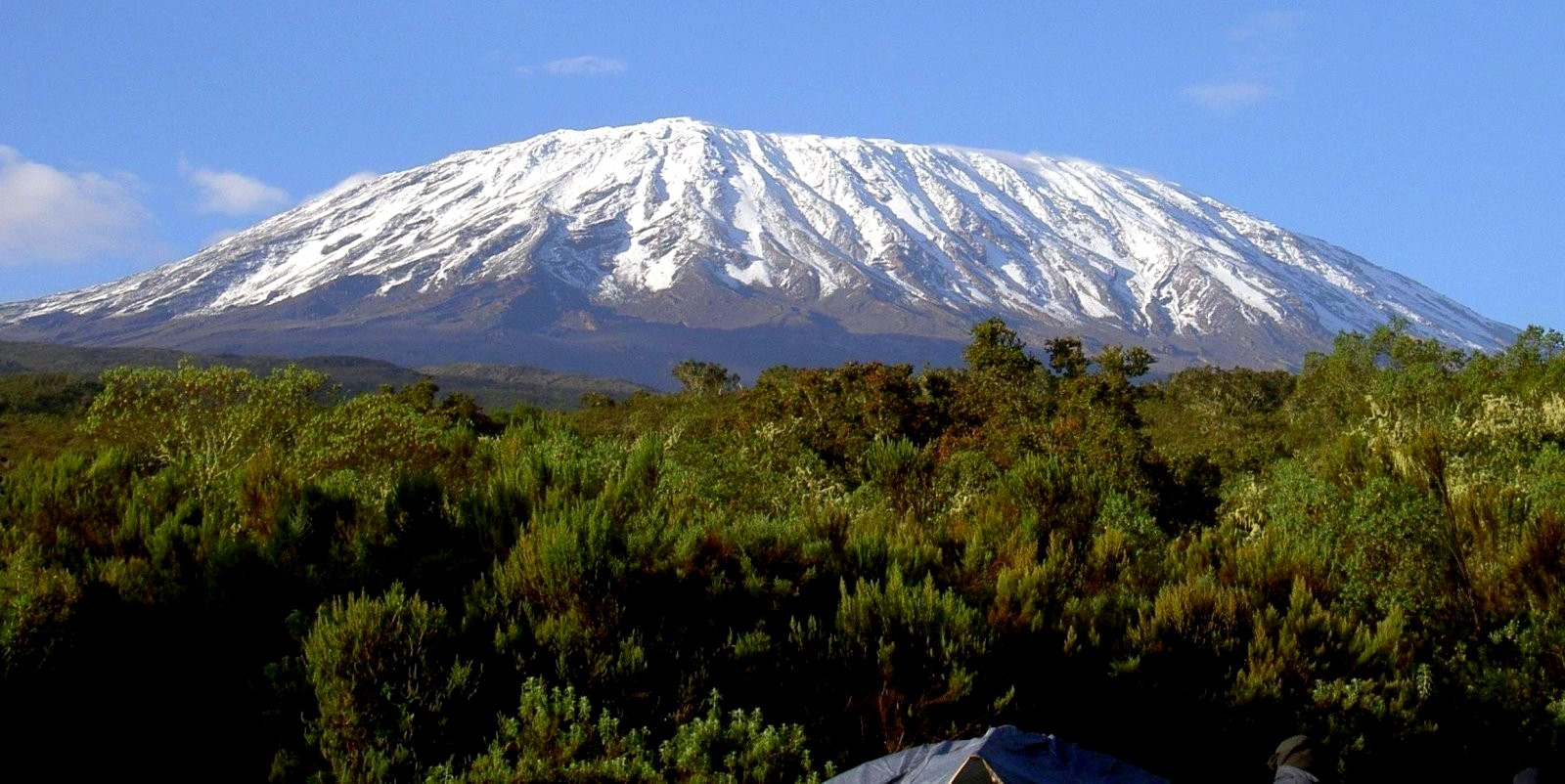
Routes to the Summit:
There are several routes to choose from when planning your ascent, each offering its own unique experiences and challenges:
-
Marangu Route: Often called the “Coca-Cola” route, this is the oldest and most defined path. It tends to be more crowded but offers hut accommodations.
-
Machame Route: Known as the “Whiskey” route, this is more challenging than Marangu but is considered more scenic, with higher success rates. It involves camping.
-
Lemosho Route: A longer route which allows for better acclimatization and has beautiful scenery, including the Shira Plateau.
-
Rongai Route: The only route that approaches from the north. It is less crowded and offers a different perspective of the mountain.
-
Umbwe Route: The steepest and most direct route, recommended only for very fit and experienced hikers.
What to Expect
-
Acclimatization: To increase your chance of reaching the summit successfully, proper acclimatization is crucial. Most routes take a minimum of six to eight days, which helps reduce the risk of altitude sickness.
-
Physical Challenge: Climbing Kilimanjaro is physically demanding. Preparation should include cardio and strength training. Although it is a non-technical climb, the high altitude, low temperatures, and occasional high winds make it a challenging endeavor.
-
Climate Zones: The journey from the base to the summit passes through several climate zones—from rainforest and moorland to alpine desert and an arctic summit.
-
Guided Tours: Climbing Kilimanjaro requires a guide. Local laws mandate that all climbers are accompanied by licensed guides. Many tour operators offer packages that include guides, porters, food, and equipment.
Climbing Mount Kilimanjaro is more than just a physical challenge; it's a life-changing journey that offers spectacular views and a profound sense of accomplishment. With the right preparation and respect for the natural environment, this climb can be an incredibly rewarding experience.
Ngorongoro Crater Safari
Ngorongoro Crater Safari offers a unique and breathtaking experience in one of the world's most astonishing natural wonders. The Ngorongoro Crater, a UNESCO World Heritage site, is the world's largest intact volcanic caldera and serves as a natural enclosure for some of Africa's densest populations of large animals.
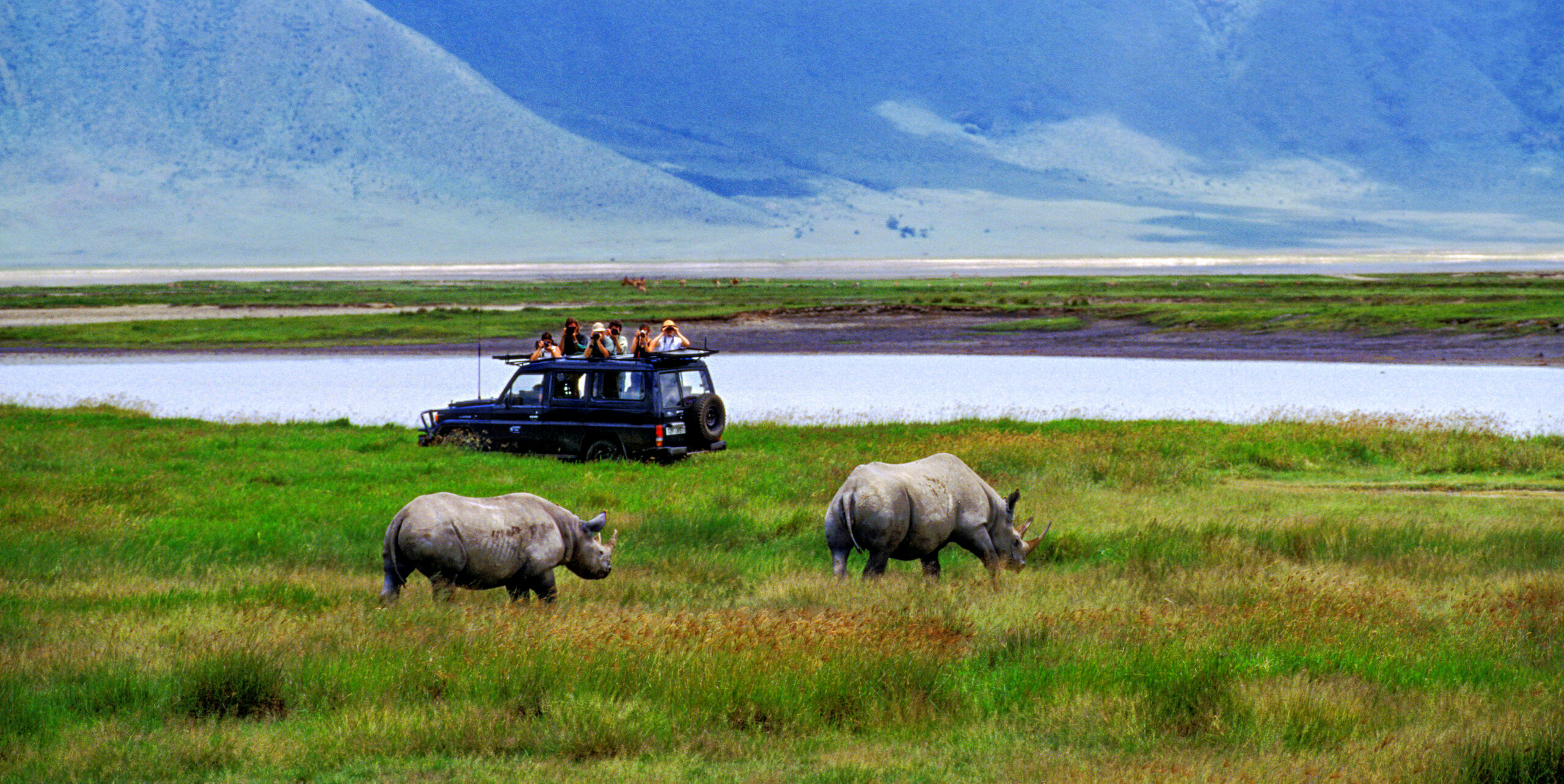
What Makes Ngorongoro Crater Unique
-
Wildlife Concentration: The crater floor is home to an estimated 25,000 animals, including the Big Five—lion, elephant, buffalo, rhinoceros, and leopard. It’s one of the few places on earth where you can see all of them in a single day.
-
Birdlife: Besides its large mammals, the crater is also a haven for bird enthusiasts with over 500 species of birds, including the flamboyant flamingos that can be found in the crater's Soda Lake.
-
Conservation and Community: The Ngorongoro Conservation Area is unique because it integrates human populations living in harmony with wildlife. This conservation model allows the Maasai people to graze their livestock alongside wild animals.
What to Expect on a Safari
-
Spectacular Views: As you descend over 600 meters into the crater, the views open up to lush grasslands, swamps, lakes, and forests, each with its own ecosystem and wildlife.
-
Diverse Ecosystems: The varied environments within the crater support a fantastic array of wildlife. You might spot hyenas chasing flamingos, elephants wandering through forests, or a pride of lions lounging in the grass.
-
Interaction with Maasai Culture: Some safari tours offer the chance to visit Maasai villages to learn about the culture and traditions of these indigenous people.
A safari in the Ngorongoro Crater is not just an exploration of a unique geographical feature but a profound encounter with the wild heart of Africa. Whether you're a first-time safari-goer or a seasoned wildlife enthusiast, the Ngorongoro Crater promises an unforgettable adventure with some of the closest and most diverse wildlife observations available anywhere in the world.
Zanzibar Beach Holidays
Zanzibar Beach Holidays offer a sublime retreat on the picturesque islands of Zanzibar, renowned for their pristine white sandy beaches, crystal-clear turquoise waters, and a tranquil atmosphere that promises relaxation and rejuvenation. This tropical paradise, located off the coast of Tanzania, provides the perfect getaway after the dusty safaris of mainland Tanzania.

What to Expect on Zanzibar Beach Holidays
-
Stunning Beaches: Zanzibar is famous for its breathtaking beaches such as Nungwi and Kendwa in the north, which are known for their vibrant beach life and spectacular sunsets. The east coast boasts quieter, powdery beaches like Paje and Jambiani, where the pace slows down, and the waters are perfect for swimming at high tide.
-
Marine Activities: The island’s coral reefs and clear waters make it an ideal destination for snorkeling and diving. The Mnemba Atoll, in particular, offers some of the best underwater experiences in East Africa.
-
Cultural Experiences: Zanzibar's rich history is a fusion of Arab, African, Persian, and European influences, evident in its food, architecture, and traditions. A visit to Stone Town, a UNESCO World Heritage site, is a must. Its winding alleys, bustling markets, and ornately carved wooden doors offer a glimpse into the island's intriguing past.
Things to Do
-
Snorkeling and Diving: Explore the vibrant coral gardens under the surface of the Indian Ocean. Zanzibar's marine life includes a variety of fish, turtles, and dolphins.
-
Spice Farm Tours: Known as the "Spice Island," Zanzibar offers guided tours at spice farms where you can learn about the cultivation of spices and their uses in local cuisine.
-
Dhow Cruises: Enjoy a traditional sail on a dhow, the wooden fishing boats used in the Indian Ocean. Sunset cruises are particularly popular for the stunning views and peaceful experience.
-
Visit Jozani Forest: Home to the rare red colobus monkeys and other endemic species, the Jozani Chwaka Bay National Park offers excellent opportunities for wildlife viewing in a lush forest setting.
Zanzibar Beach Holidays are not only about leisure and relaxation but also offer rich cultural experiences and adventurous activities in a stunning natural setting. It's an ideal destination for honeymooners, families, and solo travelers looking for a serene beachside escape.
Stone Town Cultural Tour
A Stone Town Cultural Tour is an essential part of any visit to Zanzibar, offering a deep dive into the rich historical tapestry and vibrant culture of this unique city. Stone Town, the historical core of Zanzibar City located on the western coast of the island, is a UNESCO World Heritage site celebrated for its intriguing blend of Swahili, Arab, Persian, Indian, and European influences.
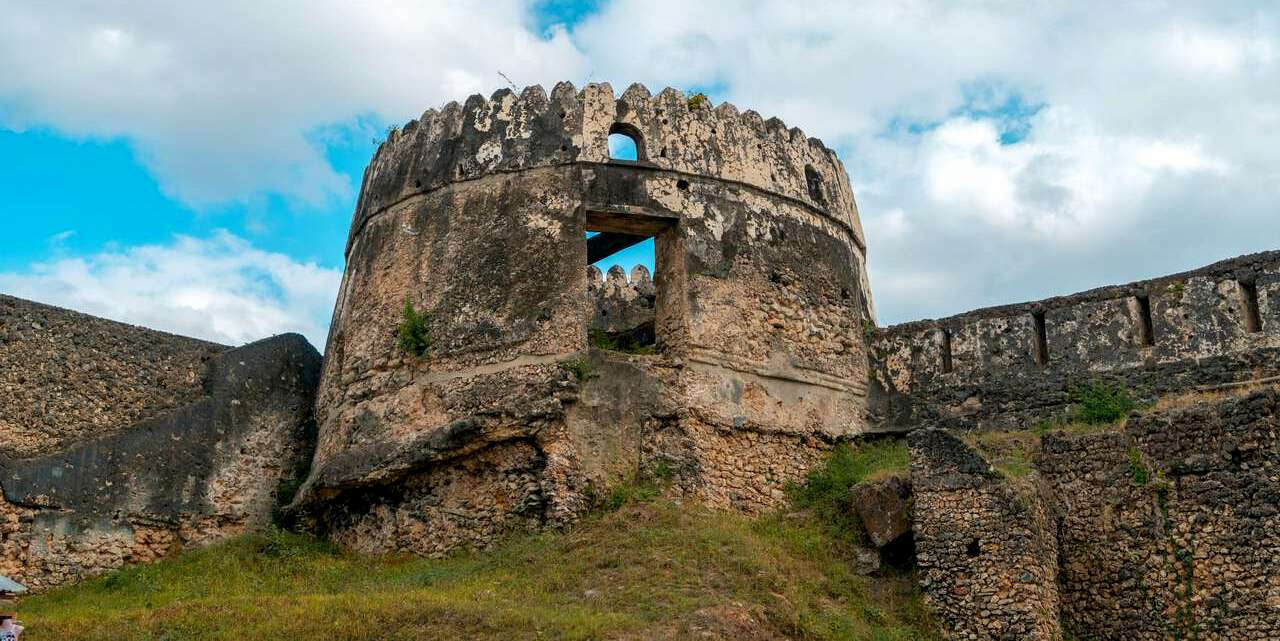
What to Expect on a Stone Town Cultural Tour
-
Rich History and Architecture: Walking through Stone Town, you'll encounter narrow winding lanes lined with buildings crafted from coral stone, featuring ornate wooden doors and balconies. The architecture is a testament to the diverse cultures that have flourished here over centuries.
-
Significant Landmarks: Key highlights include the House of Wonders, the largest and tallest building in Stone Town, which houses a museum showcasing Swahili and Zanzibari culture. The Old Fort, an ancient fortification with a rich history, and the anguished history displayed at the Slave Market site, where a memorial and museum now articulate the stories of the slave trade.
-
Vibrant Markets: The local bazaars and markets are lively and colorful, offering spices, textiles, and handcrafts. Exploring these markets not only supports local artisans but also provides a peek into the daily life and economy of the area.
Cultural and Culinary Experiences
-
Spice Tours: Zanzibar is known as the "Spice Island," and no visit is complete without a spice tour, where you can see, taste, and learn about the wide variety of spices grown on the island.
-
Swahili Cooking Classes: Participate in cooking classes to learn how to prepare traditional Swahili dishes, using local spices and cooking techniques.
-
Music and Dance: Experience the traditional Taarab music, a unique blend of Swahili tunes mixed with influences from the Middle East and India. You can catch live performances in various venues throughout Stone Town.
A Stone Town Cultural Tour not only educates visitors about the rich history and cultural fusion of Zanzibar but also allows for genuine interaction with the traditions and people who make Zanzibar so captivating. Whether you're strolling through its historic alleys, sampling its culinary delights, or enjoying its music and art, Stone Town offers a profound cultural experience that resonates long after you leave.
Great Migration Viewing
Great Migration Viewing is one of the most spectacular wildlife events on the planet. Each year, over a million wildebeest, along with hundreds of thousands of zebra and gazelle, traverse the vast plains of the Serengeti in Tanzania to the Maasai Mara in Kenya, following the rains in search of fresh grazing grounds. This epic journey is fraught with peril, including predatory threats from lions, leopards, cheetahs, and crocodiles, making it one of the most dramatic natural events witnessed in the wild.

What to Expect
-
The Phenomenon: The Great Migration is a cyclical event, with the animals moving in a large loop throughout the year. While the precise timing can vary due to weather patterns, there are key events that define the migration:
-
Calving Season (January to March): In the southern Serengeti, the wildebeest give birth over a few weeks, which attracts a host of predators.
-
Grumeti River Crossing (May to July): In their search for fresh grass, herds must navigate the dangerous waters of the Grumeti River in Tanzania, where crocodiles await.
-
Mara River Crossing (August to September): One of the most iconic and dramatic stages is the crossing of the Mara River, where the herds enter Kenya's Maasai Mara.
Best Places to View the Migration
-
Serengeti National Park, Tanzania: This is where the migration begins and ends. The southern and central plains of the Serengeti are excellent for witnessing the early stages of the migration and the calving season.
-
Western Corridor, Serengeti: Around May and June, the herds are often found in the Western Corridor, making their perilous crossing at the Grumeti River.
-
Northern Serengeti/Maasai Mara, Kenya: From July to September, the dramatic Mara River crossings can be observed from both the Northern Serengeti and Maasai Mara.
Great Migration Viewing offers an unparalleled safari experience, showcasing the raw and unfiltered beauty of nature. It's a profound reminder of the harsh realities of life in the wild and the resilience of these remarkable creatures as they undertake one of the most arduous journeys on the planet.
Zanzibar Snorkeling and Diving
Zanzibar Snorkeling and Diving offers an exceptional underwater adventure in the warm, clear waters surrounding the Zanzibar Archipelago. Known for its vibrant coral reefs and diverse marine life, Zanzibar is a prime destination for divers and snorkelers of all skill levels. Whether you’re a beginner looking to get your feet wet or an experienced diver seeking new depths, the islands provide a rich tapestry of underwater landscapes to explore.

What to Expect
-
Rich Marine Biodiversity: The reefs around Zanzibar host a variety of marine creatures, including moray eels, sea turtles, a plethora of fish species, and playful dolphins. The clear waters ensure good visibility, making it an ideal spot for underwater photography.
-
Coral Gardens: The island’s coral reefs are accessible and boast a healthy, vibrant ecosystem. Mnemba Atoll, off the northeast coast of Zanzibar, is particularly famous for its stunning coral formations and is often considered one of the best diving spots in East Africa.
-
Wreck Diving: For those interested in wreck diving, the Zanzibar Channel offers several intriguing sites, including the wrecks of the MV Xplorer and MV Pegasus, which have become artificial reefs teeming with aquatic life.
Popular Snorkeling and Diving Sites
-
Mnemba Atoll: This marine reserve is renowned for its clear waters and diverse marine life, making it perfect for both snorkeling and diving.
-
Kendwa Reef and Tumbatu Island: Ideal for snorkelers, these sites offer shallow waters with vibrant coral and plentiful fish.
-
Leven Bank: For the more adventurous and experienced diver, Leven Bank offers a challenging dive with strong currents and the chance to see larger pelagic fish.
-
Nungwi: Known for its accessible snorkeling and diving opportunities, with sites that are suitable for all levels of experience.
Zanzibar Snorkeling and Diving is more than just an activity; it's an exploration of a vibrant underwater world. Each dive or snorkel session reveals the complex beauty of the ocean’s ecosystems, making it a must-do for anyone visiting Zanzibar. Whether you're floating above a coral garden or diving alongside colorful schools of fish, the experience is sure to be a highlight of your trip.
Maasai Village Tours
Maasai Village Tours offer a unique cultural experience, providing a deep dive into the lives and traditions of the Maasai, one of East Africa's most famous indigenous tribes known for their distinctive customs, dress, and close relationship with nature. These tours are a popular way for visitors to Tanzania and parts of Kenya to engage directly with the Maasai people and learn about their traditional way of life.

What to Expect
-
Cultural Immersion: Visitors will experience a warm welcome with traditional singing and dancing, which is an integral part of Maasai culture. You might even be invited to join in the dances and learn about the meanings behind them.
-
Learn About Traditional Practices: Tour participants will see how the Maasai build their houses (known as "manyattas"), made from mud, sticks, grass, and cow dung. Guides, often Maasai themselves, will explain traditional practices such as cattle herding and natural medicine.
-
Participation in Daily Activities: Depending on the village and the tour, you might have the opportunity to participate in daily activities such as milking cows, making bead jewelry, or learning how to throw a spear.
-
Insights into Social Structures: The Maasai have a fascinating social structure that includes age-sets and warrior classes. Visitors will gain insights into how these social systems function and their significance to the community.
Educational Aspects
-
Conservation Efforts: Many tours highlight the Maasai’s efforts in wildlife conservation, a crucial aspect of their coexistence with nature. Discussions often cover how the Maasai have adapted their traditional lifestyles in response to environmental changes and conservation needs.
-
Economic Impact: By visiting a Maasai village, tourists directly contribute to the local economy. Many tours are part of community-based tourism initiatives, where proceeds go back into the community to fund education and healthcare services.
Maasai Village Tours are not only about observing but also about understanding and appreciating the rich cultural heritage of the Maasai people. These tours provide a meaningful exchange that benefits both the visitors and the host communities, offering deeper insights into the challenges and triumphs of maintaining traditional lifestyles in the modern world.
Tarangire National Park Safari
Tarangire National Park Safari introduces travelers to one of Tanzania's most underrated and spectacular national parks. Known for its vast number of elephants, majestic baobab trees, and diverse ecosystems, Tarangire offers a more secluded safari experience compared to its more famous neighbors like the Serengeti and the Ngorongoro Crater.
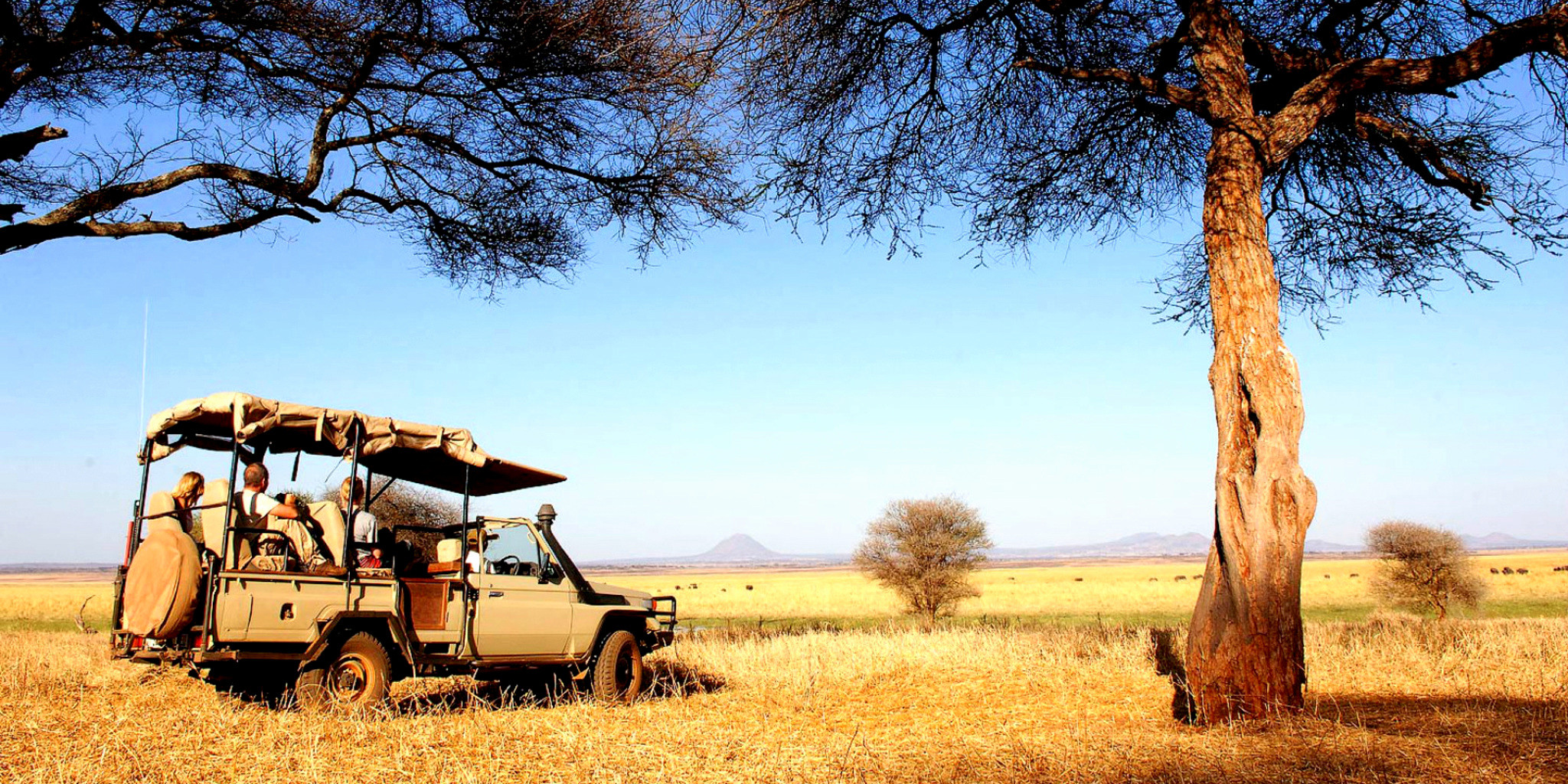
What to Expect
-
Wildlife Viewing: Tarangire is famous for its large elephant herds, which can often be seen in groups of hundreds. The park is also home to many other animals, including buffalo, lions, leopards, giraffes, and a variety of antelope species. It's a particularly good place to observe predators and prey interactions, especially during the dry season when animals congregate around the Tarangire River.
-
Birdwatching: With over 500 bird species recorded in the park, Tarangire is a haven for bird enthusiasts. The park's swamps attract numerous water birds, and it is one of the few places in Tanzania where dry-country antelope such as the fringe-eared oryx and long-necked gerenuk are regularly observed.
-
Scenic Landscapes: The landscape is diverse, ranging from grassy savannahs to swampy wetlands and rocky outcrops. The park is also renowned for its majestic baobab trees, which loom over the savannah and serve as an iconic image of the East African landscape.
Safari Options
-
Day Trips: Many visitors choose to explore Tarangire on a day trip from nearby towns such as Arusha. These typically involve morning and afternoon game drives.
-
Overnight Stays: To truly experience the beauty and solitude of Tarangire, consider staying overnight at one of the park's lodges or campsites. Night game drives are also a possibility, offering a chance to see nocturnal wildlife.
-
Walking Safaris: Some camps and lodges offer guided walking safaris, which provide a more intimate bush experience. These are typically conducted by experienced guides and offer a closer look at the park's flora and fauna.
Tarangire National Park Safari offers a unique safari experience away from the crowds. With its remarkable elephant populations, birdwatching opportunities, and stunning natural beauty, Tarangire remains a must-visit for those looking to delve deeper into Tanzania’s wild landscapes.
Zanzibar Spice Farm Excursions
Zanzibar Spice Farm Excursions provide a fascinating glimpse into the rich cultural and agricultural heritage of Zanzibar, famously known as the "Spice Island." These tours are a highlight for many visitors, offering sensory experiences that are both educational and enjoyable. Zanzibar has been a center of spice trade for centuries, with cloves, nutmeg, cinnamon, and black pepper being among the main crops that have historically driven the island's economy.

What to Expect
-
Interactive Tours: Spice farm tours are typically guided by knowledgeable locals who explain the cultivation, uses, and history of each spice. Visitors get the chance to touch, smell, and taste a variety of spices and tropical fruits directly from the plants.
-
Learning the Spice History: The guides delve into how these spices made their way to Zanzibar and the impact they have had on the island’s history and culture. You'll learn about the traditional methods of farming that are still used today and how these crops are processed and prepared for market.
-
Cooking Demonstrations: Many spice farm tours also include cooking demonstrations, showing how these spices are used in traditional Zanzibari cuisine. This often includes sampling dishes or participating in a cooking class, which is a hands-on way to understand the flavor profiles of each spice.
Popular Spices and Plants
-
Cloves: The most famous of Zanzibar’s spices, used both in cooking and for medicinal purposes.
-
Cinnamon: Harvested from the inner bark of trees, it is used in numerous sweet and savory dishes.
-
Nutmeg: Often used in baking and beverages, with the mace (covering of the nutmeg seed) also being a valuable spice.
-
Vanilla: Although not native to Zanzibar, it’s now cultivated here and used in desserts and perfumes.
-
Turmeric and Ginger: Both are staples in Zanzibari kitchens, used for their flavor and health benefits.
Zanzibar Spice Farm Excursions not only offer a chance to explore the island's verdant landscapes but also allow visitors to immerse themselves in the local culture through the aromatic world of spices. These tours are a must-do for anyone looking to experience the true essence of Zanzibar beyond its beautiful beaches and historic architecture.
Tips for Things to do in Tanzania
When visiting Tanzania, you'll find a rich blend of stunning wildlife, deep cultural experiences, and breathtaking landscapes. To ensure a fulfilling and responsible trip, here are combined tips covering various activities and practical advice:
Safari and Wildlife
-
Book with Reputable Operators: Choose experienced tour operators for safaris to ensure safety and quality.
-
Best Viewing Times: The dry seasons are ideal for wildlife spotting. Timing your visit to see major wildlife migrations can greatly enhance the experience.
-
Pack Smart: Include clothing suitable for varying temperatures, a sun hat, sunscreen, and insect repellent.
Climbing Adventures
-
Physical Preparation: Engage in cardiovascular and strength training months before your trip.
-
Acclimatization: Opt for a longer trek to better acclimate to high altitudes, improving your chances of summit success.
-
Experienced Guides: Ensure your guides are knowledgeable about high-altitude trekking.
Cultural Interactions
Health and Safety
-
Medical Preparations: Update vaccinations and take appropriate prophylaxis for diseases like malaria. Consult your doctor before traveling.
-
Travel Insurance: Secure comprehensive insurance that covers medical emergencies and activities like hiking and diving.
Conservation and Sustainability
-
Support Eco-Friendly Tours: Choose tours that support conservation efforts and minimize environmental impact.
-
Responsible Tourism: Follow Leave No Trace principles in natural areas to preserve the environment.
Transportation
- Safe Transit: Use recommended taxi services and consider flights for long distances to save time and enhance safety.
These tips will help you navigate the varied experiences available, ensuring your trip is as enriching as it is enjoyable, without specific mentions of locations or names.
Best Time for Things to do in Tanzania
Exploring Tanzania offers a wealth of activities that can be best enjoyed during specific seasons. Here's a breakdown of the best times to engage in various activities based on Tanzania's seasonal changes:
Dry Season (June to October)
-
Wildlife Viewing: This is the optimal time for safari-goers as animals congregate around water sources and vegetation is sparse, improving visibility.
-
Climbing: The weather is generally clear and stable, ideal for climbing and trekking adventures.
-
Beach Activities: Coastal regions enjoy dry, sunny weather, perfect for beach holidays and water sports.
-
Cultural Tours: Comfortable temperatures and clear skies make it a good time for cultural and historical site visits.
Wet Season (November to May)
-
Bird Watching: The presence of migratory birds along with local species in full breeding plumage makes this a spectacular time for birding enthusiasts.
-
Botanical Tours: Following the rains, the landscape is lush and vibrant, ideal for nature walks and botanical tours.
-
Lower Tourist Traffic: Those looking for fewer crowds and potentially lower prices might consider visiting during the wetter months, though access to some areas might be challenging.
Short Dry Season (January to February)
-
Climbing and Trekking: Similar to the main dry season, this period offers good conditions for climbing, with clearer paths and less mud.
-
Wildlife Viewing: Though it briefly interrupts the wet season, these months can still provide excellent wildlife viewing opportunities, especially for those interested in calving season.
- Beach Activities: The weather remains favorable for enjoying the beaches and engaging in marine activities.
Transition Months (March, April, May, and November)
-
Lush Scenery: For photographers and nature lovers, the landscapes during these months are particularly beautiful as the environment is refreshed and green.
-
Cultural and Culinary Experiences: These are great times to engage in cultural tours and cooking classes, as the pace of tourist activities slows down, allowing for more personalized experiences.
This seasonal guide helps tailor your visit to Tanzania, ensuring that you can plan your activities according to the most favorable weather conditions and your personal interests. Whether it's adventure, relaxation, or cultural immersion, each season in Tanzania has something unique to offer.
Tanzania is a diverse and vibrant country that offers a wide range of activities to suit every traveler's interests. From the thrilling wildlife safaris in its expansive parks to the serene beaches of its beautiful coastline, and the majestic heights of Mount Kilimanjaro, there is no shortage of breathtaking experiences. Cultural enthusiasts can delve deep into the rich heritage of local communities, while adventure seekers can explore the diverse landscapes through various outdoor activities. Each season in Tanzania brings its own unique offerings, making it a year-round destination. Whether you're looking for adventure, relaxation, or cultural immersion, Tanzania promises an unforgettable journey filled with spectacular sights and profound interactions with nature and culture. With careful planning around the seasons, visitors can maximize their experience and enjoy all that Tanzania has to offer to its fullest.
FAQs for Things to do in Tanzania
Q: What is the best time of year to visit Tanzania for a safari?
A: The optimal safari months in Tanzania are during the dry season from June to October, and a shorter dry spell from January to February, particularly for witnessing the calving season in the southern Serengeti.
Q: Can I climb Mount Kilimanjaro year-round?
A: Climbing Mount Kilimanjaro is possible all year, but the most favorable conditions are during the dry seasons, June to October and January to March, due to more stable weather and clearer skies.
Q: What are the top activities to do in Tanzania besides safaris?
A: Besides safaris, popular activities in Tanzania include climbing Mount Kilimanjaro, relaxing on Zanzibar's beaches, visiting Maasai villages for cultural tours, exploring Stone Town's historical sites, and engaging in snorkeling and diving in the Indian Ocean.
Q: Are there any cultural experiences I should not miss in Tanzania?
A: A visit to a Maasai village is highly recommended for an authentic insight into the Maasai culture. Additionally, touring Stone Town in Zanzibar will provide a rich cultural experience with its unique blend of architectural and historical influences.
Q: What should I pack for a trip to Tanzania?
A: Your packing list should include lightweight clothing for daytime, warmer layers for evenings, sturdy shoes, a sun hat, sunglasses, sunscreen, insect repellent, and a camera or binoculars for wildlife and scenic views.
Q: Do I need any vaccinations before traveling to Tanzania?
A: Yes, vaccinations for hepatitis A, typhoid, and yellow fever are recommended, along with malaria prophylaxis. Consult a healthcare provider for the most current advice before your trip.
Q: How can I ensure a responsible and eco-friendly visit to Tanzania?
A: Choose eco-friendly tour operators, respect wildlife and cultural norms, support local enterprises, minimize plastic use, and engage in fair-trade tourism practices to contribute positively to the local community.
Q: What kind of visa do I need to visit Tanzania, and how do I get it?
A: Most travelers require a tourist visa, available upon arrival, at Tanzanian consulates, or online via the e-visa system. Check the latest requirements based on your nationality before traveling.
Q: Is it safe to travel to Tanzania?
A: Tanzania is generally considered safe for tourists, particularly in designated tourist areas. Common sense precautions such as safeguarding valuables and using reputable tour operators should be observed.
Q: What is the currency in Tanzania, and do I need to carry cash?
A: The Tanzanian Shilling (TZS) is the official currency, but US Dollars are also widely accepted in tourist areas. Carrying some cash is advisable for smaller transactions, although larger establishments and services usually accept credit cards.
For the Nepal tour, please click here.
If you are looking for different kinds of Nepal Tours or Trekking Packages, feel free to contact us.
